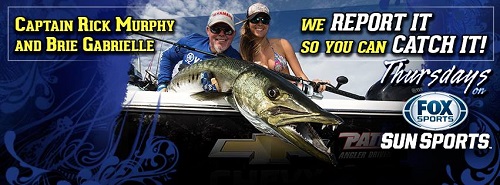 Permit like warm weather, so the permit season in my region typically runs from late spring into early fall, so like from May through September. It’s all based on water temperatures. Once the water temperatures get close to 80 degrees, the permit show up. This year, because of the warmer than normal winter we had,
Permit like warm weather, so the permit season in my region typically runs from late spring into early fall, so like from May through September. It’s all based on water temperatures. Once the water temperatures get close to 80 degrees, the permit show up. This year, because of the warmer than normal winter we had,
the water temperatures in mid-March were approaching 80 degrees, so the fish showed up early.
When you target permit in my region, you do it one of three ways: you fish the wrecks, the shallow rubble piles or you fish for them around the tarpon schools migrating up the beach. The majority of fish will be on the wrecks in 40 to 60 feet of water, but a lot of fish get on the rubble piles in 13 to 20 feet of water, and in May and early June they mix in with the tarpon cruising along the beach.
One of the drawbacks to the water temperatures getting hot early is that the bull sharks show up early as well, and they love to eat permit. Because permit are such strong fighters it takes a while to land your fish, and usually once they tire a little the sharks will lock onto them and chase them down. You can prevent the sharks from getting your fish by opening the bail and freespooling the line so the fish can swim freely and do its normal zig-zags to elude the shark. Then as you drift away from the wreck, close the bail and start the fight all over again.
Most anglers targeting permit in my region use 30 pound braided line, anywhere from 30 to 60 pound fluorocarbon leader depending on how close they are to structure and a 3/0 to 5/0 circle hook depending on the size of your crab. If you’re fishing on a wreck, reef or rubble pile where the fish can get into the structure and break you off, you want to go with a heavier leader and lock down the drag to be able to pull the fish away from the structure. In open water, you can go with a light drag and let the fish run and burn out.
Live crabs are the best permit bait, but they’ll also eat large shrimp. You can freeline the baits, put them on a ¼ ounce jighead if the permit are down deep, or you can fish them under a cork to suspend the crabs near the surface. If you can’t get crabs or shrimp, you can always throw a soft plastics. Permit will eat a 2 to 4 inch soft plastic shad, paddle tails or shrimp in dark colors like rootbeer, motor oil or dark brown. Put them out on a 3/8 inch jighead and jig them softly over the wrecks.
The average permit in my region is 14 to 23 pounds, but we see a lot of fish in the 30 pound class, so you want to use heavier gear. A seven foot rod will give you some extra casting distance, which you’ll want when throwing an unweighted crab, and make sure you have a reel that has at least 250 yards of line on it, because a big permit will leave town and take all your line with it. It’s not uncommon to have to chase after permit to land them, so a lot of boaters use an anchor ball with a clip that allows them to chase the fish and then come back to the same spot. After you land a fish and are coming back to your anchor ball, circle out wide around the structure and then work your way above the anchor ball and drift back down to it to avoid driving over the fish and spooking the school.
Permit are a smart, wary gamefish, which is one of the reasons they’re one of the most treasured fish to catch in Florida waters. They fight hard and never give up, but you won’t know that if you get too close to the school or make a lot of noise and spook them. Once the fish get spooked, you can cast at them repeatedly and not get a bite.

